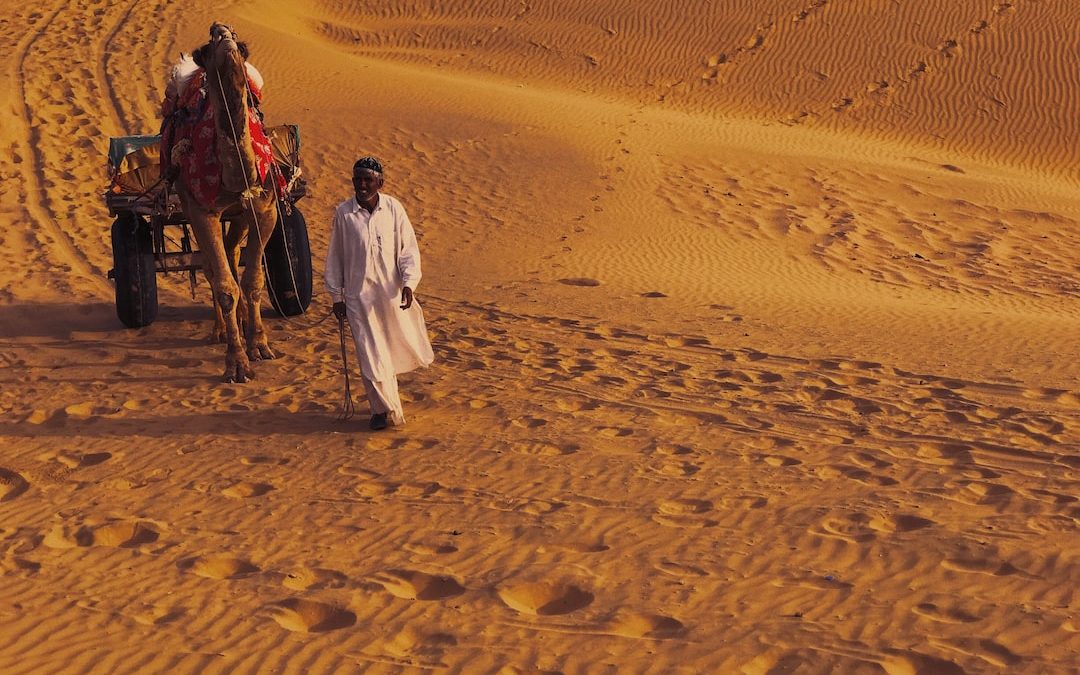Table of Contents
Welcome to the Wonder of the Great Indian Desert
Introduction
The Great Indian Desert, also known as Thar Desert, is a vast expanse of arid land that spans the western and northwestern parts of India. It covers an area of more than 200,000 square kilometers and covers the states of Rajasthan, Gujarat, Punjab, and Haryana. The desert is home to a wide variety of flora and fauna, and is a stunningly beautiful place to explore. Despite its harsh climate, the desert is full of life, and offers a unique and unforgettable experience. Read on to learn more about the wonder of the Great Indian Desert.
The Landscape of the Thar Desert
The Great Indian Desert is a vast area of sand dunes, salt flats, and shrublands. The sand dunes can reach up to 200 meters in height, and the desert is home to a variety of plants and animals. The landscape is dotted with acacia trees, which are a keystone species of the desert. The desert is also home to a variety of reptiles, birds, and small mammals.
The History of the Great Indian Desert
The Great Indian Desert has been inhabited since ancient times. It was home to the Indus Valley Civilization, which flourished between 2600 and 1900 BC. The desert is also home to a variety of archaeological sites, including the ruins of the Indus Valley cities of Harappa and Mohenjo-daro. The desert has also been the site of a number of important battles, including the Battle of Haldighati in 1576, which pitted the forces of the Mughal Emperor Akbar against the forces of the Rajput ruler Maharana Pratap.
The Culture of the Thar Desert
The Great Indian Desert is home to a variety of ethnic and linguistic groups. The most populous of these are the Rajasthani people, who are mostly Hindu. The desert is also home to a number of other ethnic groups, including the Jat, Rajput, and Meena. The desert is home to a variety of languages, including Hindi, Marwari, and Gujarati.
The Wildlife of the Thar Desert
The Great Indian Desert is home to a variety of wildlife species. These include the endangered Great Indian Bustard, the Asiatic Wild Ass, the Chinkara, and the Desert Fox. The desert is also home to a variety of reptiles, including the Monitor Lizard and the Indian Cobra. The desert is also home to a variety of birds, including the Houbara Bustard, the Great Indian Bustard, and the painted stork.
The People of the Thar Desert
The people of the Great Indian Desert are a resilient and resourceful people. They have adapted to the harsh climate of the desert, and are able to survive in its extreme conditions. The people of the desert lead a traditional lifestyle, and rely heavily on agriculture and livestock rearing. They live in small villages, which are often clustered around oases.
The Festivals of the Thar Desert
The people of the Great Indian Desert celebrate a variety of festivals throughout the year. These include the Holi festival, which marks the beginning of spring, and the Diwali festival, which marks the victory of good over evil. The people of the desert also celebrate the Pushkar Fair, which is held every year in the town of Pushkar.
The Cuisine of the Thar Desert
The people of the Great Indian Desert have developed a unique and flavorful cuisine, which is heavily influenced by the spices and flavors of the region. The cuisine is characterized by the use of locally sourced ingredients, such as millet and sorghum. Popular dishes include the Rajasthani thali, which is a platter of curries, vegetables, and breads, as well as the traditional Rajasthani snack of pakoras.
The Architecture of the Thar Desert
The Great Indian Desert is home to a variety of architectural styles, which reflect the region’s history and culture. The most iconic example is the Hawa Mahal, a palace built in Jaipur in 1799. The palace is renowned for its intricate and elaborate designs, which are a reflection of the Rajput style of architecture. Other notable examples include the Junagarh Fort, the Amber Fort, and the Mehrangarh Fort.
The Music & Dance of the Thar Desert
The people of the Great Indian Desert have a vibrant and unique culture, which is expressed through their music and dance. The most popular traditional dance of the region is the Ghoomar dance, which is characterized by its swirling skirts and graceful movements. Popular musical instruments include the dholak, the sarangi, and the harmonium.
The Crafts of the Thar Desert
The people of the Great Indian Desert have a rich tradition of handicrafts. These include the block-printing of fabrics, the weaving of carpets, and the creation of jewelry and pottery. The region is also renowned for its lacquer and woodwork, which is used to create a variety of decorative items.
Conclusion
The Great Indian Desert is a vast and stunningly beautiful region, which is home to a rich and vibrant culture. Its landscape is dotted with sand dunes, acacia trees, and salt flats, and it is home to a variety of flora and fauna. The desert is also home to a variety of ethnic and linguistic groups, and is famed for its unique cuisine, music, dance, and crafts. The desert is an unforgettable experience, and offers a unique and unforgettable experience.












